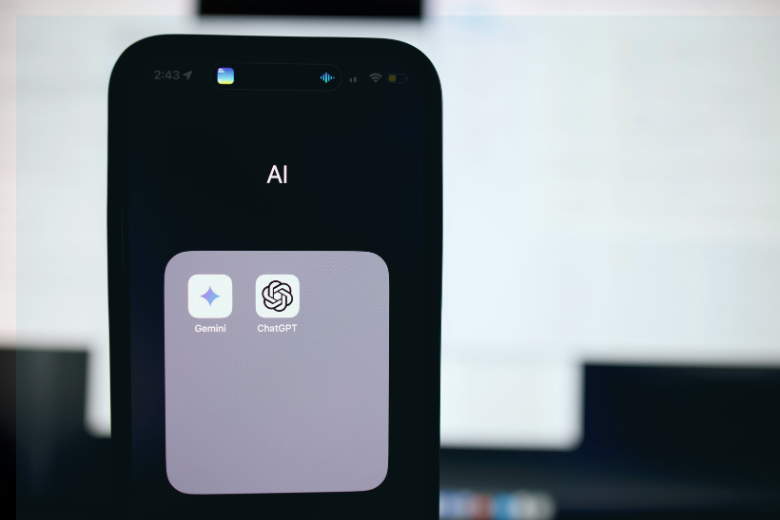With the right prompts, legal professionals can use ChatGPT to clear their to-do lists faster than ever. When used intentionally, ChatGPT can speed up everything from intake to resolution, without sacrificing the attention to detail legal work demands.
Here are five practical use cases and the exact prompts to try.
1. Streamline Client Intake
Legal intake is a high-stakes starting point. But it’s also time-consuming. ChatGPT can turn messy meeting notes or transcripts into structured summaries in seconds.
💡 Prompt to Try:
"Summarize the following client intake notes into a structured brief including:
- Client name
- Matter type
- Key legal issues
- Urgency level
- Any requested follow-up actions”
Paste in your raw meeting notes or transcript, and ChatGPT will return a clean, usable summary in seconds.
Once generated, that summary can flow straight into Salesforce and kick off the appropriate workflow, no manual rekeying required.
2. Draft Client Emails in Half the Time
Routine client updates can take hours each week. With ChatGPT, legal teams can create polished, professional drafts in seconds.
💡 Prompt to Try:
“Draft a client-facing email update for a personal injury case.
Include:
- A brief summary of recent legal activity (depo completed, records received, etc.)
- The next key steps in the process
- Estimated timeline for resolution
- Tone: empathetic but professional
- Add a reminder that this is not legal advice
- Close with a clear CTA or reassurance (e.g. ‘Let me know if you have any questions’)
Format as a polished, client-ready email.”
Pro Tip:
Once generated, you can easily tweak tone, add disclaimers, or personalize for different clients. ChatGPT handles the structure and clarity, you keep the nuance and legal oversight.
3. Create Actionable Task Lists from Case Files
Case notes are only useful if they lead to action. Use ChatGPT to extract tasks, assign owners, and even suggest deadlines, so your case management stays proactive.
💡 Prompt to Try:
“Review the following case summary and generate a detailed task list.
For each task, include:
- Task name
- Assigned role (e.g., paralegal, legal assistant, attorney)
- Description of the task
- Any dependencies or prerequisites
- Suggested due date (based on a typical 30-day litigation timeline)
- Priority level (High, Medium, Low)
Return the output as a clean, bulleted list grouped by role.”
Bonus Tip:
Once generated, these tasks can be auto-synced into Salesforce or your case management system, creating visibility, ownership, and momentum from day one.
4. Speed Up Legal Research
AI won’t replace legal expertise, but it can help your team research smarter and faster, especially for common legal issues or jurisdictions.
💡Prompt to Try:
“Act as a legal research assistant. Based on jurisdictional norms in Minneapolis, Minnesota, identify the top 3 legal considerations for drafting or enforcing a non-compete agreement.
For each consideration, include:
- A plain-language explanation
- Relevant statutes or case law (cite where applicable)
- Any common limitations or exceptions
- Risks or red flags to be aware of
Format your response as a concise research brief for internal use.”
Best Practice: Use ChatGPT as a starting point, not a source of legal advice. Ground prompts in your firm’s case data, jurisdictional rules, and research workflows to ensure relevance and compliance.
Pro Tip: Connect ChatGPT to Salesforce or your internal knowledge base to surface firm-approved clauses, previous opinions, or jurisdictional guidance, making AI outputs more contextual and reliable.
5. Draft Standard Legal Documents in Minutes
From motions to discovery letters, many legal documents follow a standard structure. ChatGPT can create first drafts that save hours.
Try this:
💡 Prompt to Try:
“Draft a motion to compel discovery under Florida Rules of Civil Procedure.
Base it on the following facts: [insert case facts, dates, and context].
Structure the motion with:
- Title and caption
- Introduction and procedural background
- Legal basis (cite relevant Florida statutes or rules)
- Factual support
- Requested relief
- Signature block placeholder
Keep the tone formal and jurisdiction-appropriate. Format as a professional legal draft.”
Best Practice:
Use this as your team’s starting point, you’ll still need to review, refine, and localize. But with the structure and legal framework already in place, drafting becomes faster, more consistent, and easier to delegate.
Why It Works Better with Salesforce
ChatGPT is powerful on its own, but even more so when embedded into a Salesforce workflow.
Imagine a new intake is logged in Salesforce, and a prompt automatically triggers a summary from ChatGPT. When a case milestone is hit, ChatGPT suggests the next client communication. Task lists, email drafts, and document summaries, generated and deployed without anyone switching tools or losing context.
That’s what Bolt Data Legal enables. By configuring Salesforce specifically for law firms with embedded AI workflows, we help firms accelerate case timelines, reduce errors, and give attorneys more time to focus on what matters most.
Plus, because the prompts draw from your firm’s live Salesforce data, such as jurisdiction, practice area, or case type, outputs stay accurate, consistent, and aligned with your legal standards.
What This Means for Legal Teams
You don’t need to overhaul your systems. You don’t need to be an AI expert. All you need are the right use cases, the right prompts, and the right tech partner to guide the way.
At Bolt Data Legal, we’ve helped firms reduce attorney supervision time by 91%, cut document retrieval time by 40%, and eliminate hundreds of hours of legal admin. When you combine Salesforce with AI tools like ChatGPT, you can improve your team's efficiency.
Ready to see what’s possible?
Book a free consultation with Bolt Data Legal and discover how generative AI can fit into your legal workflows securely, compliantly, and at scale.





.svg)
.png)